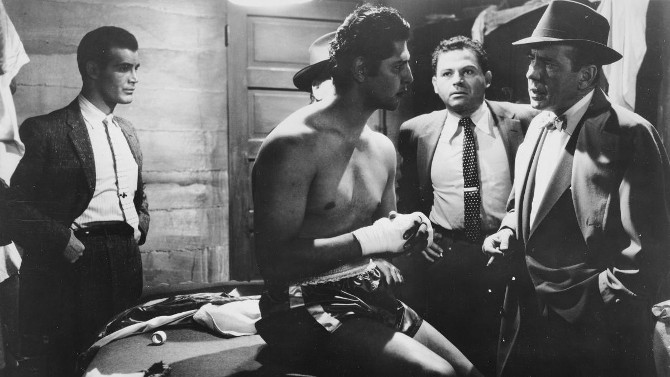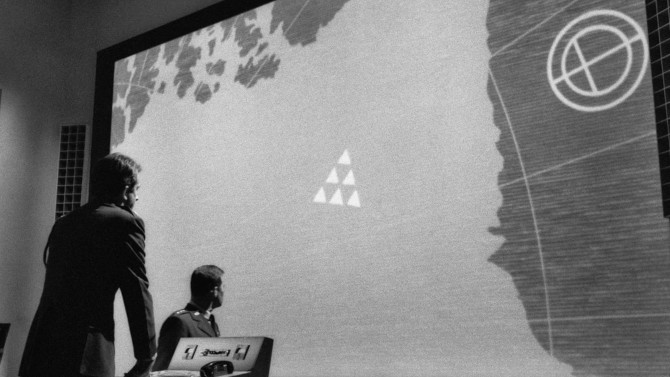
Safety First
Like a severe and utterly serious version of Stanley Kubrick’s 1964 satirical dark comedy Dr. Strangelove or: How I Learned to Stop Worrying and Love the Bomb, you would think that Fail Safe would have been the original release in theatres that was then later spoofed, yet that is not the case. Released approximately six months later in the same year, as you might imagine, it led to very poor returns at the box office – dare I say it (as the film deals with this subject matter)... it was a bomb! Despite that, over time, it has become a bonafide classic. Based upon Eugene Burdick’s 1962 novel of the same name and directed by Sidney Lumet (Dog Day Afternoon), he introduces us to our main players by way of little vignettes.
-
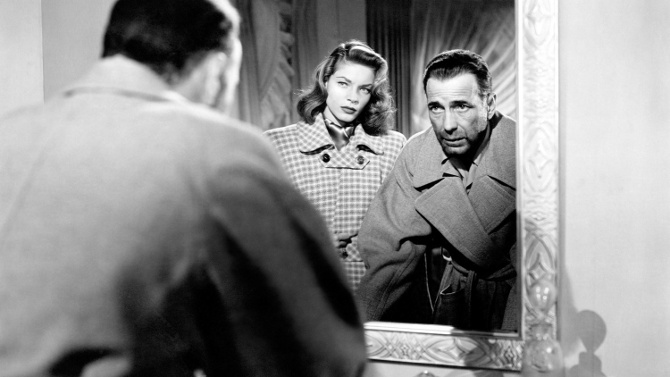
Saving Face
Dark PassageNovember 12, 2019The third of four films made by the husband and wife dream team of Humphrey Bogart and Lauren Bacall, 1947's Dark Passage, written and directed by Delmer Daves (Destination Tokyo), is perhaps one of the most unique film noirs of the classical era. Not revealing star Humphrey Bogart’s face until sixty-two minutes into the movie, studio head Jack L. Warner (Warner Bros), upon learning this, was absolutely furious. . . but, the film was already so far into production that nothing could be done.
-
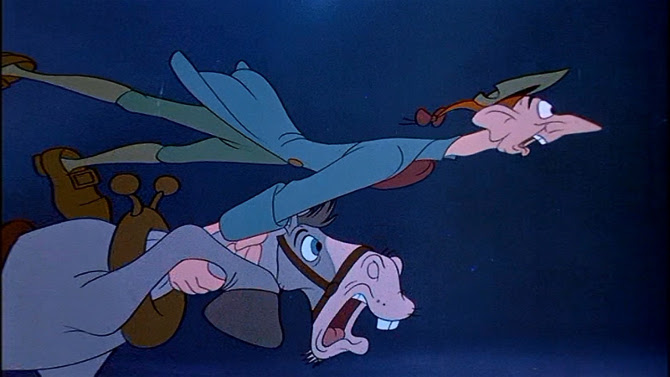
Short Cuts
The Adventures of Ichabod and Mr. ToadOctober 2, 2019Celebrating its 70th anniversary this 2019, Disney’s The Adventures of Ichabod and Mr. Toad (1949) is perhaps one of the most bizarre pairings of stories ever to hit movie theatres. . . Coupling Kenneth Grahame’s iconic children’s novel “The Wind In the Willows” with Washington Irving’s gothic horror story “The Legend of Sleepy Hollow”, you may be wondering what these two tales have in common. . . in short, absolutely nothing (it was actually due to reduced manpower during World War 2 that six movies – this being the last, were released in these combined and shortened formats). Woven together by a narrated battle of the greatest characters ever to grace British and American shores, English narrator Basil Rathbone (most famous for playing Sherlock Holmes) selects the former story, while Washingtonian Bing Crosby (singer/actor) highlights the latter. . . two more rich, melodious voices you will not find.
-
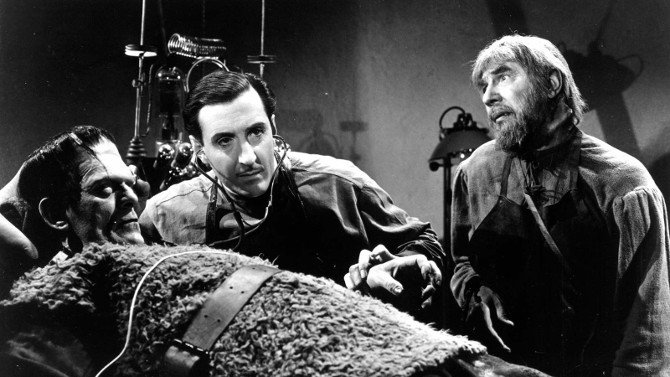
Like Father, Like Son
Son of FrankensteinSeptember 29, 2019Celebrating its 80th anniversary this 2019, the Son of Frankenstein (1939), directed by Rowland V. Lee, is the third film in the franchise – following Frankenstein (1931) and Bride of Frankenstein (1935), the last to feature Boris Karloff in the role of the monster, and the first to insert Bela Lugosi as Ygor. . . pairing two of the most iconic horror actors together was a smart move for Universal – the movie was a mammoth hit. All centred on the dramatic, pencil mustached Baron Wolf von Frankenstein (Basil Rathbone – arguably the greatest portrayer of Sherlock Holmes), he is the son of the original mad doctor. . . and is returning home with his slightly twitchy wife Elsa (Josephine Hutchinson) and young son Peter (Donnie Dunagan) – a cute, fear nothing lad whose accent is an eccentric delight, to claim his inheritance – much to the chagrin of the still terrified townsfolk.
-

Unlucky Number 13
Assault on Precinct 13September 23, 2019A lieutenant officer working the first day on the job, a group of prisoners being transported to a high security facility, a father and daughter looking for their nanny’s home, and a mysterious interracial inner city gang. . . what do they all have in common? They all almost fatefully find their way to an emptied police precinct on the verge of closure in John Carpenter’s 1976 low budget cult classic Assault on Precinct 13. Only John Carpenter’s second feature film, the writer/director weaves these four stories together, a doomed pacing drawing them all to one location for a single fateful night. The officer is Ethan Bishop (Austin Stoker), an African American working his first day on the job. . . given a seemingly uneventful task, he is the man in charge of the derelict Precinct 13 – a semi-closed location that will have its power and telephone lines shut off the next morning. The only remaining skeleton staff are: Sergeant Chaney (Henry Brandon) and a pair of secretaries, Leigh (Laurie Zimmer) and Julie (Nancy Kyes).
-
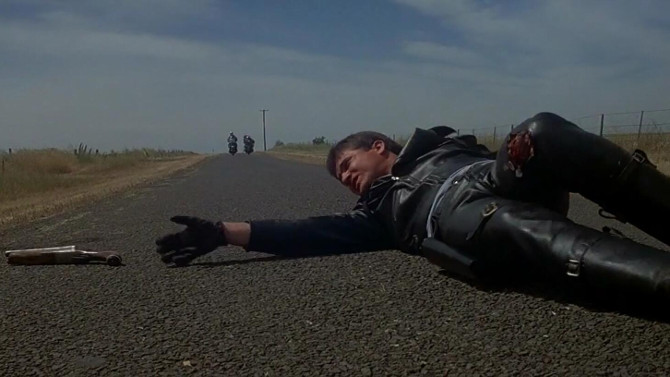
Crank It to the Mad Max
Mad MaxSeptember 18, 2019You’ve got to give credit to guerrilla film making. Usually encompassing a newish director and actors, a limited budget, rebellious on-location shoots, and a certain disregard for rules and regulations (mostly due to a lack of money), some of cinemas most unique and creative pictures have come from this cheap form of movie making. Think Rocky, The Evil Dead, El Mariachi, Clerks, and today’s motion picture, Mad Max (1979). Made for 400 thousand Australian dollars, it went on to make more than 100 million US worldwide – at that point holding the Guinness Book of World Records for most profitable film (only losing it in 1999 to The Blair Witch Project). Putting writer/director George Miller and star Mel Gibson (in his first leading role) on the map, it also thrust Australian New Wave cinema into global consciousness, while bringing forth a surge in dystopic movies that dealt with similar ideas and themes. In fact, it was such a success, it also spawned three sequels – Mad Max 2 aka The Road Warrior (1981), Mad Max Beyond Thunderdome (1985), and the Gibson-less Mad Max: Fury Road (2015). . . this most recent effort considered an instant classic (and one of the best reviewed films of the year).
-
Star Pick with George Chuvalo
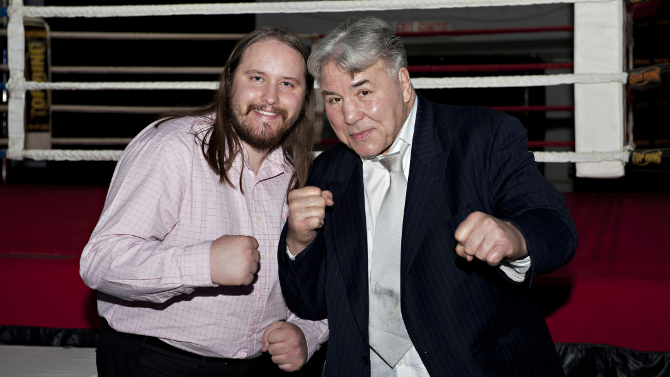 Ring RacketThe Harder They FallSeptember 4, 2019
Ring RacketThe Harder They FallSeptember 4, 2019Arguably the greatest Canadian pugilist of all-time, George Chuvalo, standing six feet tall, weighing in at 240 pounds, and with a reach of seventy-one inches, was also graced with an iron jaw. Part of ninety-three professional bouts, Chuvalo never once fell to the canvas – and when you look at the foes he fought, that is one impressive statistic. With a record of 72-19-2, he was a five time Canadian champ, and two time World Heavyweight contender (the first against Ernie Terrell in 1965). Perhaps his two greatest fights were against Muhammad Ali (in 1966 and 1972) – though some may point to the 1965 Fight of the Year versus Floyd Patterson. Given only seventeen days to prepare for their first match, people (along with Ali) didn’t give Chuvalo much of a chance. . . yet, 12 rounds in, the man was still standing (for the first time ever in Ali’s career), the pair going the full 15. Yet, after the fight, Ali claimed, “he is the toughest fighter I ever fought” – Chuvalo earning the man’s respect. And, there is no doubt in Chuvalo’s mind about the fight, for he has long said, “when it was all over, Ali was the guy who went to the hospital because he was pissing blood. . . Me? I went dancing with my wife”.

